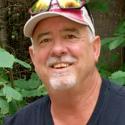
Finally, some rain showed up across much of southwest Minnesota and everyone was more than happy to see it. I certainly didn’t need it to make a living like many others, but it was still a welcome sight to me for a different reason.
The first two weeks of August is the timeframe when the Minnesota DNR conducts their annual roadside counts for a variety of species, but the king in all this is the pheasant. Hunters utilize the roadside counts to get a feel for how the season looks to shake out.
The roadside counts are driven each year, and the results are compared to the prior year, the past 10 years and against the lifetime averages. I have wanted this job for almost three decades. It was only after the conservation officer who had it before me retired that the Nobles County spot opened up.
I drive three separate routes on three different days with each drive starting at sunrise. The routes are each 25 miles long and are driven at 10 mph. Each time a bird is spotted, I jump out of the truck and run down the ditch in order to see if I can flush out the rest of the brood. The birds seen are recorded on a data sheet. The sex, approximate age and mile marker is recorded.
The key to a successful drive is the right conditions. Each observer is supposed to pick a morning with clear skies, little to no wind and heavy dew. The issue this past week was lack of dew. I could walk 100 yards in the ditch at sunrise, and all I could come up with was the gravel dust on my boots from the grass.
The recent rains will change this a lot. As of today, I have exactly one week to complete the three routes in my county. I should have no issue making the timeline, but it is compressed into a week instead of 15 days. Tomorrow will be Day 1.
I remember my very first drive on the first year I did the roadside counts, and it took a very short time for the learning curve to kick in. I saw my first brood of pheasant chicks and went barreling into the ditch to flush the rest. In a span of about 20 yards I was completely soaked to the skin and spent the next 2.5 hours driving like I was caught in a flash flood. Not much fun that day. Now it’s a full rain bibs and jacket in order to finish successfully.
We count all kinds of different critters. Deer are counted and the age and sex is noted on the data sheet. Mourning doves are always the most prevalent, with numbers reaching over 150 in a 25-mile span. Cottontail rabbits and jack rabbits are counted and recorded. If I see even one jack rabbit in 25 miles, that is a win in my book.
Hungarian partridges are also on the count list, but most routes end with no sighting at all. In a good year I might see a half dozen. Sandhill cranes are on the list, but in the 10 years I have been doing the roadside survey, I have only seen one, and I’m sure he/she was lost and looking for home as they don’t nest anywhere close to me.
There is just something special about a wildlife ride as the sun comes up. Recording the sighted species is just a great reason to get out of bed a little earlier than normal.
I always try to avoid any weekend days for these drives as there is more traffic around, and if a car or truck comes blazing down the road in my direction from 3 miles away, there will be very little to count on those miles.
Many of the miles on each of my routes offer very little cover in the way of grasslands or wetlands. Of the 75 miles in my three routes, there is about 50 miles of mowed and hayed road ditches. It would be great if the routes were re-organized, but the only way to keep the data from being skewed is for them to remain the same.
All I know is that when I do have a mile that passes some private wildlife habitat or a citizen-owned Wildlife Management Area, I see wildlife. All wildlife needs is a place to live and carry out their natural lifecycle. We have changed that landscape so dramatically over the past 200 years I am surprised many times by just how resilient wildlife can actually be.
The key to high pheasant numbers is undisturbed grass. Nature can and will do the rest.
The results of the roadside counts will be out in late August or early September. You can see how we fared in pheasant reproduction then. In the meantime, consider getting out of bed early and doing your own wildlife counting ride. Sunrise is equaled only by a colorful sunset. I get to see a lot of both.
Scott Rall, Worthington, is a habitat conservationist, avid hunting and fishing enthusiast and is president of Nobles County Pheasants Forever. He can be reached at scottarall@gmail.com.


